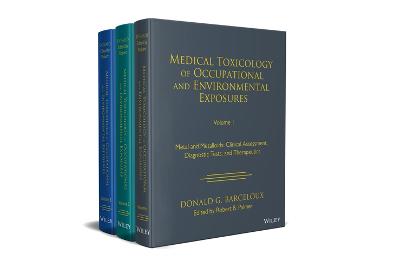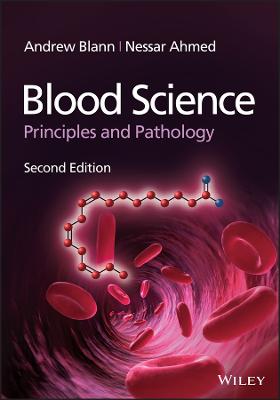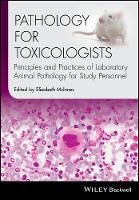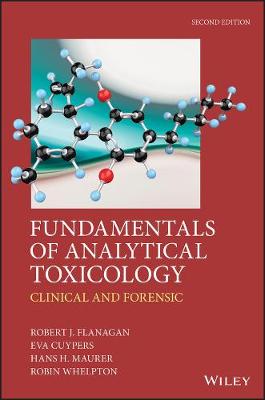Pathology for Toxicologists
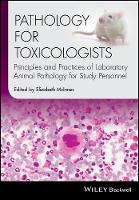 -15%
portes grátis
-15%
portes grátis
Pathology for Toxicologists
Principles and Practices of Laboratory Animal Pathology for Study Personnel
McInnes, Elizabeth
John Wiley and Sons Ltd
04/2017
216
Dura
Inglês
9781118755419
15 a 20 dias
586
Descrição não disponível.
List of Contributors xi
Preface xiii
1 An Introduction to Pathology Techniques 1
Elizabeth McInnes
1.1 Animal Considerations 2
1.2 Necropsy 2
1.3 Lung Inflation with Fixative 5
1.4 Fixation 5
1.5 Making Glass Slides 6
1.5.1 Trimming 6
1.5.2 Tissue Processing 9
1.5.3 Embedding 9
1.5.4 Microtoming 9
1.5.5 Staining 9
1.5.6 Quality Control 11
1.6 Special Histochemical Stains 12
1.7 Decalcification 13
1.8 Immunohistochemistry 13
1.9 Tissue Crossreactivity Studies 15
1.10 Electron Microscopy 15
1.11 In Situ Hybridisation 16
1.12 Laser Capture Microscopy 16
1.13 Confocal Microscopy 16
1.14 Image Analysis 17
1.15 Digital Imaging 17
1.16 Spermatocyte Analysis 17
1.17 Good Laboratory Practice 17
1.18 Inhalation Studies 18
1.19 Continuous?]Infusion Studies 18
1.20 Carcinogenicity 19
1.21 Biologicals 19
1.22 The Pathology Report 20
1.23 Conclusion 20
References 20
2 Recording Pathology Data 23
Cheryl L. Scudamore
2.1 What is a Pathology Finding? 24
2.2 Standardisation of Pathology Findings 24
2.2.1 Semiquantitative Analysis 24
2.2.2 Nomenclature/Controlled Terminology 26
2.2.3 Ontological Approach 28
2.3 'Inconsistencies' in Pathology Recording 28
2.3.1 Diagnostic Drift 28
2.3.2 Thresholds 28
2.3.3 Lumping versus Splitting 29
2.4 Blind Review 30
2.5 Historical Control Data: Pros and Cons 30
2.6 The Use of Peer Review in Pathology 32
References 32
3 General Pathology and the Terminology of Basic Pathology 35
Elizabeth McInnes
3.1 Cellular Responses to Insults 35
3.2 Inflammation 41
3.3 Circulatory Disturbances 46
3.4 Disorders of Tissue Growth 52
3.5 Tissue Repair and Healing 53
3.6 Neoplasia 54
3.7 Immune System 55
References 57
4 Common Spontaneous and Background Lesions in Laboratory Animals 59
Elizabeth McInnes
4.1 Rats 62
4.2 Mice 63
4.3 Dogs 66
4.4 Minipigs 66
4.5 Non?]Human Primates 67
4.6 Rabbits 67
4.7 Experimental Procedures 67
4.8 Causes of Death in Rats and Mice 67
4.9 Conclusion 68
References 69
5 Target Organ Pathology 72
Elizabeth McInnes
5.1 Skin 72
5.2 Eye 76
5.3 Gastrointestinal Tract 78
5.4 Liver 83
5.5 Respiratory System 85
5.6 Urinary System 89
5.7 Lymphoreticular System 94
5.8 Musculoskeletal System 95
5.9 Cardiovascular System 97
5.10 Endocrine System 99
5.11 Reproductive System 102
5.12 Central and Peripheral Nervous System 104
5.13 Ear 106
References 106
6 Clinical Pathology 112
Barbara von Beust
6.1 Clinical Pathology in Study Phases and Good Laboratory Practice 112
6.1.1 Preanalytic Phase: Study Plan 113
6.1.2 Analytic Phase: Data Generation 114
6.1.3 Postanalytic Phase: Data Interpretation and Reporting 114
6.1.4 Good Laboratory Practice 114
6.2 What is Measured in Clinical Pathology? 115
6.2.1 Interference by Haemolysis, Lipaemia and Icterus 116
6.3 Haematology 117
6.3.1 Manual and Automated Techniques in Haematology 118
6.3.2 Haematocrit and Red Blood Cell Mass 119
6.3.3 Blood Cells 120
6.3.4 The Standard Haematology Profile 124
6.3.5 Bone Marrow 125
6.4 Coagulation 125
6.4.1 Standard Coagulation Profile 126
6.4.2 Prothrombin Time 127
6.4.3 Activated Partial Thromboplastin Time 127
6.4.4 Fibrinogen 127
6.5 Clinical Chemistry 127
6.5.1 Metabolites 127
6.5.2 Enzymes 129
6.5.3 Electrolytes and Minerals 129
6.5.4 Standard Chemistry Profiles 130
6.6 Urinalysis 131
6.7 Acute?]Phase Proteins 131
6.8 The Biomarker Concept 132
6.9 Reference Intervals 133
6.10 Instrumentation, Validation and Quality Control 133
6.11 Data Analysis and Interpretation 134
6.12 Reporting 135
6.13 Food Consumption and Body Weight (Gain) 136
6.14 Organ Weights 136
6.15 Examples of Typical Clinical Pathology Profile Changes in Toxicologic Clinical Pathology 136
6.15.1 Reduced Red Blood Cell Mass due to Chronic Disease 138
6.15.2 Stress Response 139
6.15.3 Reduced Red Blood Cell Mass due to Excessive Blood Sampling 139
6.15.4 Common Artefacts 139
6.16 Microsampling 140
6.17 Conclusion 141
Acknowledgments 141
References 141
7 Adversity: A Pathologist's Perspective 145
Bhanu Singh
7.1 LOAEL, NOEL and NOAEL: Definition 146
7.2 Adversity 147
7.3 Determining Adversity using Pathology Findings: Factors to Consider 149
7.3.1 Severity 149
7.3.2 Functional Effect 150
7.3.3 Primary versus Secondary Effects 151
7.3.4 Physiological Adaptability 152
7.3.5 Reversibility of the Lesion 152
7.3.6 Pharmacological Effect 153
7.4 Communicating NOAEL in Toxicity Studies 153
7.5 Conclusion 154
References 154
8 Limitations of Pathology and Animal Models 157
Natasha Neef
8.1 Limitations of In Vivo Animal Models 157
8.1.1 Traditional Laboratory Species Used as General Toxicology Models 157
8.1.2 The Test Article May Not have Sufficient Pharmacological Activity in Routine Toxicology Species 158
8.1.3 The Model May Not Identify Hazards Related to Causation or Exacerbation of Pathology that is Unique to Humans or Undetectable in Animals 159
8.1.4 The Model May Not Identify Hazards with Low Incidence/Low Severity 159
8.1.5 Potential for Misinterpretation of Reversibility/Recovery for Low?]Incidence Findings 160
8.1.6 Potential for Over?] or Underestimation of the Relationship to Test Article of Findings that have High Spontaneous Incidence in Laboratory Species, but are Relatively Rare in Humans 160
8.1.7 Exclusive Use of Young, Healthy Animals Kept in Ideal Conditions Gives Limited Predictivity for Aged/Diseased Human Populations 161
8.2 Efficacy/Disease Models as Toxicology Models 162
8.3 Limitations of Efficacy/Disease Models as Toxicology Models 164
8.3.1 Lack of Validation as Safety/Toxicology Models 164
8.3.2 Disease Models Rarely Have All the Elements of the Equivalent Human Disease 165
8.3.3 Limited Sensitivity Produced by Increased Interanimal Variability amongst Diseased Animals and/or Low Animal Numbers 165
8.3.4 Lack of Historical Data 166
8.3.5 Risk Associated with Nonregulated Laboratory Conditions 166
8.4 Limitations of Pathology within In Vivo Toxicology Models 167
8.4.1 Anatomic Pathology Evaluation Will Not Identify Hazards with No Morphological Correlates 167
8.4.2 Limitations of Pathology when Evaluating Moribund Animals or Animals Found Dead on Study 168
8.4.3 Limitations of Anatomic and/or Clinical Pathology End Points within other Types of In Vivo Preclinical Safety Study 168
8.4.4 Limitations of Histopathology Related to Sampling Error 169
8.4.5 Limitations of Quantitative Anatomic Pathology 170
8.4.6 Limitations of Pathology Related to Subjectivity and Pathologist Error 173
8.4.7 Anatomic Pathology Error/Missed Findings 173
8.4.8 Subjectivity and Pathologist Variability 175
8.5 Managing Risk Associated with Subjectivity and the Potential for Pathologist Error 176
8.5.1 Choice of Study Pathologist 176
8.5.2 Peer Review 176
8.5.3 Review of the Anatomic Pathology Data 177
8.5.4 Review of Anatomic Pathology Data Interpretation 177
References 179
Glossary 184
Index 187
Preface xiii
1 An Introduction to Pathology Techniques 1
Elizabeth McInnes
1.1 Animal Considerations 2
1.2 Necropsy 2
1.3 Lung Inflation with Fixative 5
1.4 Fixation 5
1.5 Making Glass Slides 6
1.5.1 Trimming 6
1.5.2 Tissue Processing 9
1.5.3 Embedding 9
1.5.4 Microtoming 9
1.5.5 Staining 9
1.5.6 Quality Control 11
1.6 Special Histochemical Stains 12
1.7 Decalcification 13
1.8 Immunohistochemistry 13
1.9 Tissue Crossreactivity Studies 15
1.10 Electron Microscopy 15
1.11 In Situ Hybridisation 16
1.12 Laser Capture Microscopy 16
1.13 Confocal Microscopy 16
1.14 Image Analysis 17
1.15 Digital Imaging 17
1.16 Spermatocyte Analysis 17
1.17 Good Laboratory Practice 17
1.18 Inhalation Studies 18
1.19 Continuous?]Infusion Studies 18
1.20 Carcinogenicity 19
1.21 Biologicals 19
1.22 The Pathology Report 20
1.23 Conclusion 20
References 20
2 Recording Pathology Data 23
Cheryl L. Scudamore
2.1 What is a Pathology Finding? 24
2.2 Standardisation of Pathology Findings 24
2.2.1 Semiquantitative Analysis 24
2.2.2 Nomenclature/Controlled Terminology 26
2.2.3 Ontological Approach 28
2.3 'Inconsistencies' in Pathology Recording 28
2.3.1 Diagnostic Drift 28
2.3.2 Thresholds 28
2.3.3 Lumping versus Splitting 29
2.4 Blind Review 30
2.5 Historical Control Data: Pros and Cons 30
2.6 The Use of Peer Review in Pathology 32
References 32
3 General Pathology and the Terminology of Basic Pathology 35
Elizabeth McInnes
3.1 Cellular Responses to Insults 35
3.2 Inflammation 41
3.3 Circulatory Disturbances 46
3.4 Disorders of Tissue Growth 52
3.5 Tissue Repair and Healing 53
3.6 Neoplasia 54
3.7 Immune System 55
References 57
4 Common Spontaneous and Background Lesions in Laboratory Animals 59
Elizabeth McInnes
4.1 Rats 62
4.2 Mice 63
4.3 Dogs 66
4.4 Minipigs 66
4.5 Non?]Human Primates 67
4.6 Rabbits 67
4.7 Experimental Procedures 67
4.8 Causes of Death in Rats and Mice 67
4.9 Conclusion 68
References 69
5 Target Organ Pathology 72
Elizabeth McInnes
5.1 Skin 72
5.2 Eye 76
5.3 Gastrointestinal Tract 78
5.4 Liver 83
5.5 Respiratory System 85
5.6 Urinary System 89
5.7 Lymphoreticular System 94
5.8 Musculoskeletal System 95
5.9 Cardiovascular System 97
5.10 Endocrine System 99
5.11 Reproductive System 102
5.12 Central and Peripheral Nervous System 104
5.13 Ear 106
References 106
6 Clinical Pathology 112
Barbara von Beust
6.1 Clinical Pathology in Study Phases and Good Laboratory Practice 112
6.1.1 Preanalytic Phase: Study Plan 113
6.1.2 Analytic Phase: Data Generation 114
6.1.3 Postanalytic Phase: Data Interpretation and Reporting 114
6.1.4 Good Laboratory Practice 114
6.2 What is Measured in Clinical Pathology? 115
6.2.1 Interference by Haemolysis, Lipaemia and Icterus 116
6.3 Haematology 117
6.3.1 Manual and Automated Techniques in Haematology 118
6.3.2 Haematocrit and Red Blood Cell Mass 119
6.3.3 Blood Cells 120
6.3.4 The Standard Haematology Profile 124
6.3.5 Bone Marrow 125
6.4 Coagulation 125
6.4.1 Standard Coagulation Profile 126
6.4.2 Prothrombin Time 127
6.4.3 Activated Partial Thromboplastin Time 127
6.4.4 Fibrinogen 127
6.5 Clinical Chemistry 127
6.5.1 Metabolites 127
6.5.2 Enzymes 129
6.5.3 Electrolytes and Minerals 129
6.5.4 Standard Chemistry Profiles 130
6.6 Urinalysis 131
6.7 Acute?]Phase Proteins 131
6.8 The Biomarker Concept 132
6.9 Reference Intervals 133
6.10 Instrumentation, Validation and Quality Control 133
6.11 Data Analysis and Interpretation 134
6.12 Reporting 135
6.13 Food Consumption and Body Weight (Gain) 136
6.14 Organ Weights 136
6.15 Examples of Typical Clinical Pathology Profile Changes in Toxicologic Clinical Pathology 136
6.15.1 Reduced Red Blood Cell Mass due to Chronic Disease 138
6.15.2 Stress Response 139
6.15.3 Reduced Red Blood Cell Mass due to Excessive Blood Sampling 139
6.15.4 Common Artefacts 139
6.16 Microsampling 140
6.17 Conclusion 141
Acknowledgments 141
References 141
7 Adversity: A Pathologist's Perspective 145
Bhanu Singh
7.1 LOAEL, NOEL and NOAEL: Definition 146
7.2 Adversity 147
7.3 Determining Adversity using Pathology Findings: Factors to Consider 149
7.3.1 Severity 149
7.3.2 Functional Effect 150
7.3.3 Primary versus Secondary Effects 151
7.3.4 Physiological Adaptability 152
7.3.5 Reversibility of the Lesion 152
7.3.6 Pharmacological Effect 153
7.4 Communicating NOAEL in Toxicity Studies 153
7.5 Conclusion 154
References 154
8 Limitations of Pathology and Animal Models 157
Natasha Neef
8.1 Limitations of In Vivo Animal Models 157
8.1.1 Traditional Laboratory Species Used as General Toxicology Models 157
8.1.2 The Test Article May Not have Sufficient Pharmacological Activity in Routine Toxicology Species 158
8.1.3 The Model May Not Identify Hazards Related to Causation or Exacerbation of Pathology that is Unique to Humans or Undetectable in Animals 159
8.1.4 The Model May Not Identify Hazards with Low Incidence/Low Severity 159
8.1.5 Potential for Misinterpretation of Reversibility/Recovery for Low?]Incidence Findings 160
8.1.6 Potential for Over?] or Underestimation of the Relationship to Test Article of Findings that have High Spontaneous Incidence in Laboratory Species, but are Relatively Rare in Humans 160
8.1.7 Exclusive Use of Young, Healthy Animals Kept in Ideal Conditions Gives Limited Predictivity for Aged/Diseased Human Populations 161
8.2 Efficacy/Disease Models as Toxicology Models 162
8.3 Limitations of Efficacy/Disease Models as Toxicology Models 164
8.3.1 Lack of Validation as Safety/Toxicology Models 164
8.3.2 Disease Models Rarely Have All the Elements of the Equivalent Human Disease 165
8.3.3 Limited Sensitivity Produced by Increased Interanimal Variability amongst Diseased Animals and/or Low Animal Numbers 165
8.3.4 Lack of Historical Data 166
8.3.5 Risk Associated with Nonregulated Laboratory Conditions 166
8.4 Limitations of Pathology within In Vivo Toxicology Models 167
8.4.1 Anatomic Pathology Evaluation Will Not Identify Hazards with No Morphological Correlates 167
8.4.2 Limitations of Pathology when Evaluating Moribund Animals or Animals Found Dead on Study 168
8.4.3 Limitations of Anatomic and/or Clinical Pathology End Points within other Types of In Vivo Preclinical Safety Study 168
8.4.4 Limitations of Histopathology Related to Sampling Error 169
8.4.5 Limitations of Quantitative Anatomic Pathology 170
8.4.6 Limitations of Pathology Related to Subjectivity and Pathologist Error 173
8.4.7 Anatomic Pathology Error/Missed Findings 173
8.4.8 Subjectivity and Pathologist Variability 175
8.5 Managing Risk Associated with Subjectivity and the Potential for Pathologist Error 176
8.5.1 Choice of Study Pathologist 176
8.5.2 Peer Review 176
8.5.3 Review of the Anatomic Pathology Data 177
8.5.4 Review of Anatomic Pathology Data Interpretation 177
References 179
Glossary 184
Index 187
Este título pertence ao(s) assunto(s) indicados(s). Para ver outros títulos clique no assunto desejado.
Pathology; Laboratory animals; Toxicological; Techniques; Histopathology; Target organ pathology; Clinical pathology; Adversity; Macroscopic pathology; Pharmaceutical
List of Contributors xi
Preface xiii
1 An Introduction to Pathology Techniques 1
Elizabeth McInnes
1.1 Animal Considerations 2
1.2 Necropsy 2
1.3 Lung Inflation with Fixative 5
1.4 Fixation 5
1.5 Making Glass Slides 6
1.5.1 Trimming 6
1.5.2 Tissue Processing 9
1.5.3 Embedding 9
1.5.4 Microtoming 9
1.5.5 Staining 9
1.5.6 Quality Control 11
1.6 Special Histochemical Stains 12
1.7 Decalcification 13
1.8 Immunohistochemistry 13
1.9 Tissue Crossreactivity Studies 15
1.10 Electron Microscopy 15
1.11 In Situ Hybridisation 16
1.12 Laser Capture Microscopy 16
1.13 Confocal Microscopy 16
1.14 Image Analysis 17
1.15 Digital Imaging 17
1.16 Spermatocyte Analysis 17
1.17 Good Laboratory Practice 17
1.18 Inhalation Studies 18
1.19 Continuous?]Infusion Studies 18
1.20 Carcinogenicity 19
1.21 Biologicals 19
1.22 The Pathology Report 20
1.23 Conclusion 20
References 20
2 Recording Pathology Data 23
Cheryl L. Scudamore
2.1 What is a Pathology Finding? 24
2.2 Standardisation of Pathology Findings 24
2.2.1 Semiquantitative Analysis 24
2.2.2 Nomenclature/Controlled Terminology 26
2.2.3 Ontological Approach 28
2.3 'Inconsistencies' in Pathology Recording 28
2.3.1 Diagnostic Drift 28
2.3.2 Thresholds 28
2.3.3 Lumping versus Splitting 29
2.4 Blind Review 30
2.5 Historical Control Data: Pros and Cons 30
2.6 The Use of Peer Review in Pathology 32
References 32
3 General Pathology and the Terminology of Basic Pathology 35
Elizabeth McInnes
3.1 Cellular Responses to Insults 35
3.2 Inflammation 41
3.3 Circulatory Disturbances 46
3.4 Disorders of Tissue Growth 52
3.5 Tissue Repair and Healing 53
3.6 Neoplasia 54
3.7 Immune System 55
References 57
4 Common Spontaneous and Background Lesions in Laboratory Animals 59
Elizabeth McInnes
4.1 Rats 62
4.2 Mice 63
4.3 Dogs 66
4.4 Minipigs 66
4.5 Non?]Human Primates 67
4.6 Rabbits 67
4.7 Experimental Procedures 67
4.8 Causes of Death in Rats and Mice 67
4.9 Conclusion 68
References 69
5 Target Organ Pathology 72
Elizabeth McInnes
5.1 Skin 72
5.2 Eye 76
5.3 Gastrointestinal Tract 78
5.4 Liver 83
5.5 Respiratory System 85
5.6 Urinary System 89
5.7 Lymphoreticular System 94
5.8 Musculoskeletal System 95
5.9 Cardiovascular System 97
5.10 Endocrine System 99
5.11 Reproductive System 102
5.12 Central and Peripheral Nervous System 104
5.13 Ear 106
References 106
6 Clinical Pathology 112
Barbara von Beust
6.1 Clinical Pathology in Study Phases and Good Laboratory Practice 112
6.1.1 Preanalytic Phase: Study Plan 113
6.1.2 Analytic Phase: Data Generation 114
6.1.3 Postanalytic Phase: Data Interpretation and Reporting 114
6.1.4 Good Laboratory Practice 114
6.2 What is Measured in Clinical Pathology? 115
6.2.1 Interference by Haemolysis, Lipaemia and Icterus 116
6.3 Haematology 117
6.3.1 Manual and Automated Techniques in Haematology 118
6.3.2 Haematocrit and Red Blood Cell Mass 119
6.3.3 Blood Cells 120
6.3.4 The Standard Haematology Profile 124
6.3.5 Bone Marrow 125
6.4 Coagulation 125
6.4.1 Standard Coagulation Profile 126
6.4.2 Prothrombin Time 127
6.4.3 Activated Partial Thromboplastin Time 127
6.4.4 Fibrinogen 127
6.5 Clinical Chemistry 127
6.5.1 Metabolites 127
6.5.2 Enzymes 129
6.5.3 Electrolytes and Minerals 129
6.5.4 Standard Chemistry Profiles 130
6.6 Urinalysis 131
6.7 Acute?]Phase Proteins 131
6.8 The Biomarker Concept 132
6.9 Reference Intervals 133
6.10 Instrumentation, Validation and Quality Control 133
6.11 Data Analysis and Interpretation 134
6.12 Reporting 135
6.13 Food Consumption and Body Weight (Gain) 136
6.14 Organ Weights 136
6.15 Examples of Typical Clinical Pathology Profile Changes in Toxicologic Clinical Pathology 136
6.15.1 Reduced Red Blood Cell Mass due to Chronic Disease 138
6.15.2 Stress Response 139
6.15.3 Reduced Red Blood Cell Mass due to Excessive Blood Sampling 139
6.15.4 Common Artefacts 139
6.16 Microsampling 140
6.17 Conclusion 141
Acknowledgments 141
References 141
7 Adversity: A Pathologist's Perspective 145
Bhanu Singh
7.1 LOAEL, NOEL and NOAEL: Definition 146
7.2 Adversity 147
7.3 Determining Adversity using Pathology Findings: Factors to Consider 149
7.3.1 Severity 149
7.3.2 Functional Effect 150
7.3.3 Primary versus Secondary Effects 151
7.3.4 Physiological Adaptability 152
7.3.5 Reversibility of the Lesion 152
7.3.6 Pharmacological Effect 153
7.4 Communicating NOAEL in Toxicity Studies 153
7.5 Conclusion 154
References 154
8 Limitations of Pathology and Animal Models 157
Natasha Neef
8.1 Limitations of In Vivo Animal Models 157
8.1.1 Traditional Laboratory Species Used as General Toxicology Models 157
8.1.2 The Test Article May Not have Sufficient Pharmacological Activity in Routine Toxicology Species 158
8.1.3 The Model May Not Identify Hazards Related to Causation or Exacerbation of Pathology that is Unique to Humans or Undetectable in Animals 159
8.1.4 The Model May Not Identify Hazards with Low Incidence/Low Severity 159
8.1.5 Potential for Misinterpretation of Reversibility/Recovery for Low?]Incidence Findings 160
8.1.6 Potential for Over?] or Underestimation of the Relationship to Test Article of Findings that have High Spontaneous Incidence in Laboratory Species, but are Relatively Rare in Humans 160
8.1.7 Exclusive Use of Young, Healthy Animals Kept in Ideal Conditions Gives Limited Predictivity for Aged/Diseased Human Populations 161
8.2 Efficacy/Disease Models as Toxicology Models 162
8.3 Limitations of Efficacy/Disease Models as Toxicology Models 164
8.3.1 Lack of Validation as Safety/Toxicology Models 164
8.3.2 Disease Models Rarely Have All the Elements of the Equivalent Human Disease 165
8.3.3 Limited Sensitivity Produced by Increased Interanimal Variability amongst Diseased Animals and/or Low Animal Numbers 165
8.3.4 Lack of Historical Data 166
8.3.5 Risk Associated with Nonregulated Laboratory Conditions 166
8.4 Limitations of Pathology within In Vivo Toxicology Models 167
8.4.1 Anatomic Pathology Evaluation Will Not Identify Hazards with No Morphological Correlates 167
8.4.2 Limitations of Pathology when Evaluating Moribund Animals or Animals Found Dead on Study 168
8.4.3 Limitations of Anatomic and/or Clinical Pathology End Points within other Types of In Vivo Preclinical Safety Study 168
8.4.4 Limitations of Histopathology Related to Sampling Error 169
8.4.5 Limitations of Quantitative Anatomic Pathology 170
8.4.6 Limitations of Pathology Related to Subjectivity and Pathologist Error 173
8.4.7 Anatomic Pathology Error/Missed Findings 173
8.4.8 Subjectivity and Pathologist Variability 175
8.5 Managing Risk Associated with Subjectivity and the Potential for Pathologist Error 176
8.5.1 Choice of Study Pathologist 176
8.5.2 Peer Review 176
8.5.3 Review of the Anatomic Pathology Data 177
8.5.4 Review of Anatomic Pathology Data Interpretation 177
References 179
Glossary 184
Index 187
Preface xiii
1 An Introduction to Pathology Techniques 1
Elizabeth McInnes
1.1 Animal Considerations 2
1.2 Necropsy 2
1.3 Lung Inflation with Fixative 5
1.4 Fixation 5
1.5 Making Glass Slides 6
1.5.1 Trimming 6
1.5.2 Tissue Processing 9
1.5.3 Embedding 9
1.5.4 Microtoming 9
1.5.5 Staining 9
1.5.6 Quality Control 11
1.6 Special Histochemical Stains 12
1.7 Decalcification 13
1.8 Immunohistochemistry 13
1.9 Tissue Crossreactivity Studies 15
1.10 Electron Microscopy 15
1.11 In Situ Hybridisation 16
1.12 Laser Capture Microscopy 16
1.13 Confocal Microscopy 16
1.14 Image Analysis 17
1.15 Digital Imaging 17
1.16 Spermatocyte Analysis 17
1.17 Good Laboratory Practice 17
1.18 Inhalation Studies 18
1.19 Continuous?]Infusion Studies 18
1.20 Carcinogenicity 19
1.21 Biologicals 19
1.22 The Pathology Report 20
1.23 Conclusion 20
References 20
2 Recording Pathology Data 23
Cheryl L. Scudamore
2.1 What is a Pathology Finding? 24
2.2 Standardisation of Pathology Findings 24
2.2.1 Semiquantitative Analysis 24
2.2.2 Nomenclature/Controlled Terminology 26
2.2.3 Ontological Approach 28
2.3 'Inconsistencies' in Pathology Recording 28
2.3.1 Diagnostic Drift 28
2.3.2 Thresholds 28
2.3.3 Lumping versus Splitting 29
2.4 Blind Review 30
2.5 Historical Control Data: Pros and Cons 30
2.6 The Use of Peer Review in Pathology 32
References 32
3 General Pathology and the Terminology of Basic Pathology 35
Elizabeth McInnes
3.1 Cellular Responses to Insults 35
3.2 Inflammation 41
3.3 Circulatory Disturbances 46
3.4 Disorders of Tissue Growth 52
3.5 Tissue Repair and Healing 53
3.6 Neoplasia 54
3.7 Immune System 55
References 57
4 Common Spontaneous and Background Lesions in Laboratory Animals 59
Elizabeth McInnes
4.1 Rats 62
4.2 Mice 63
4.3 Dogs 66
4.4 Minipigs 66
4.5 Non?]Human Primates 67
4.6 Rabbits 67
4.7 Experimental Procedures 67
4.8 Causes of Death in Rats and Mice 67
4.9 Conclusion 68
References 69
5 Target Organ Pathology 72
Elizabeth McInnes
5.1 Skin 72
5.2 Eye 76
5.3 Gastrointestinal Tract 78
5.4 Liver 83
5.5 Respiratory System 85
5.6 Urinary System 89
5.7 Lymphoreticular System 94
5.8 Musculoskeletal System 95
5.9 Cardiovascular System 97
5.10 Endocrine System 99
5.11 Reproductive System 102
5.12 Central and Peripheral Nervous System 104
5.13 Ear 106
References 106
6 Clinical Pathology 112
Barbara von Beust
6.1 Clinical Pathology in Study Phases and Good Laboratory Practice 112
6.1.1 Preanalytic Phase: Study Plan 113
6.1.2 Analytic Phase: Data Generation 114
6.1.3 Postanalytic Phase: Data Interpretation and Reporting 114
6.1.4 Good Laboratory Practice 114
6.2 What is Measured in Clinical Pathology? 115
6.2.1 Interference by Haemolysis, Lipaemia and Icterus 116
6.3 Haematology 117
6.3.1 Manual and Automated Techniques in Haematology 118
6.3.2 Haematocrit and Red Blood Cell Mass 119
6.3.3 Blood Cells 120
6.3.4 The Standard Haematology Profile 124
6.3.5 Bone Marrow 125
6.4 Coagulation 125
6.4.1 Standard Coagulation Profile 126
6.4.2 Prothrombin Time 127
6.4.3 Activated Partial Thromboplastin Time 127
6.4.4 Fibrinogen 127
6.5 Clinical Chemistry 127
6.5.1 Metabolites 127
6.5.2 Enzymes 129
6.5.3 Electrolytes and Minerals 129
6.5.4 Standard Chemistry Profiles 130
6.6 Urinalysis 131
6.7 Acute?]Phase Proteins 131
6.8 The Biomarker Concept 132
6.9 Reference Intervals 133
6.10 Instrumentation, Validation and Quality Control 133
6.11 Data Analysis and Interpretation 134
6.12 Reporting 135
6.13 Food Consumption and Body Weight (Gain) 136
6.14 Organ Weights 136
6.15 Examples of Typical Clinical Pathology Profile Changes in Toxicologic Clinical Pathology 136
6.15.1 Reduced Red Blood Cell Mass due to Chronic Disease 138
6.15.2 Stress Response 139
6.15.3 Reduced Red Blood Cell Mass due to Excessive Blood Sampling 139
6.15.4 Common Artefacts 139
6.16 Microsampling 140
6.17 Conclusion 141
Acknowledgments 141
References 141
7 Adversity: A Pathologist's Perspective 145
Bhanu Singh
7.1 LOAEL, NOEL and NOAEL: Definition 146
7.2 Adversity 147
7.3 Determining Adversity using Pathology Findings: Factors to Consider 149
7.3.1 Severity 149
7.3.2 Functional Effect 150
7.3.3 Primary versus Secondary Effects 151
7.3.4 Physiological Adaptability 152
7.3.5 Reversibility of the Lesion 152
7.3.6 Pharmacological Effect 153
7.4 Communicating NOAEL in Toxicity Studies 153
7.5 Conclusion 154
References 154
8 Limitations of Pathology and Animal Models 157
Natasha Neef
8.1 Limitations of In Vivo Animal Models 157
8.1.1 Traditional Laboratory Species Used as General Toxicology Models 157
8.1.2 The Test Article May Not have Sufficient Pharmacological Activity in Routine Toxicology Species 158
8.1.3 The Model May Not Identify Hazards Related to Causation or Exacerbation of Pathology that is Unique to Humans or Undetectable in Animals 159
8.1.4 The Model May Not Identify Hazards with Low Incidence/Low Severity 159
8.1.5 Potential for Misinterpretation of Reversibility/Recovery for Low?]Incidence Findings 160
8.1.6 Potential for Over?] or Underestimation of the Relationship to Test Article of Findings that have High Spontaneous Incidence in Laboratory Species, but are Relatively Rare in Humans 160
8.1.7 Exclusive Use of Young, Healthy Animals Kept in Ideal Conditions Gives Limited Predictivity for Aged/Diseased Human Populations 161
8.2 Efficacy/Disease Models as Toxicology Models 162
8.3 Limitations of Efficacy/Disease Models as Toxicology Models 164
8.3.1 Lack of Validation as Safety/Toxicology Models 164
8.3.2 Disease Models Rarely Have All the Elements of the Equivalent Human Disease 165
8.3.3 Limited Sensitivity Produced by Increased Interanimal Variability amongst Diseased Animals and/or Low Animal Numbers 165
8.3.4 Lack of Historical Data 166
8.3.5 Risk Associated with Nonregulated Laboratory Conditions 166
8.4 Limitations of Pathology within In Vivo Toxicology Models 167
8.4.1 Anatomic Pathology Evaluation Will Not Identify Hazards with No Morphological Correlates 167
8.4.2 Limitations of Pathology when Evaluating Moribund Animals or Animals Found Dead on Study 168
8.4.3 Limitations of Anatomic and/or Clinical Pathology End Points within other Types of In Vivo Preclinical Safety Study 168
8.4.4 Limitations of Histopathology Related to Sampling Error 169
8.4.5 Limitations of Quantitative Anatomic Pathology 170
8.4.6 Limitations of Pathology Related to Subjectivity and Pathologist Error 173
8.4.7 Anatomic Pathology Error/Missed Findings 173
8.4.8 Subjectivity and Pathologist Variability 175
8.5 Managing Risk Associated with Subjectivity and the Potential for Pathologist Error 176
8.5.1 Choice of Study Pathologist 176
8.5.2 Peer Review 176
8.5.3 Review of the Anatomic Pathology Data 177
8.5.4 Review of Anatomic Pathology Data Interpretation 177
References 179
Glossary 184
Index 187
Este título pertence ao(s) assunto(s) indicados(s). Para ver outros títulos clique no assunto desejado.

